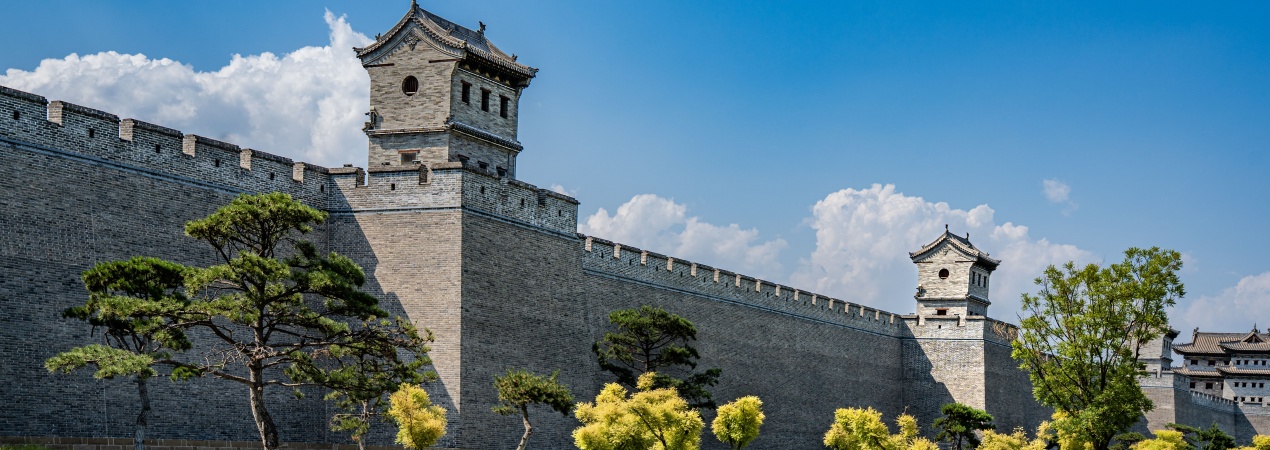
Taiyuan Educational Tour
Taiyuan, the capital of Shanxi, is rich in cultural resources. This 6-day educational tour will take you into Shanxi's thousand-year history. From the thousand-year-old Buddha grottoes dating back to the Eastern Wei Dynasty to typical Shanxi merchant architecture, from unrestrained coal mining to the history of seeking balance between nature and human energy, from various ancient murals to the exploration of modern cultural relic restoration and protection, you will gain a comprehensive understanding of Shanxi's natural and human history.
Itinerary at a Glance
| Day | Location | Highlights |
|---|---|---|
| D1 | Taiyuan | Arrive in Taiyuan, rest for a day to gather energy |
| D2 | Tianlongshan Grottoes-Mengshan Giant Buddha | Visit grottoes to see statues of different dynasties, watch 3D projection of Buddha head return, walk mountain trail to see cliff statues, view rebuilt giant Buddha |
| D3 | Qiao Family Compound-Coal Museum of China | Visit merchant residence to see architectural layout and draft bank exhibits, view plant fossils, take simulated mine train, learn about coal's role and Shanxi's economic dilemma |
| D4 | Donghu Vinegar Garden-Jinci Temple | Visit vinegar brewing workshops, try making vinegar soap or chocolate, experience vinegar steam treatment; view temple's "Three Wonders" and unique bridge, assemble dougong parts |
| D5 | Shanxi Museum-Twin Pagoda Temple-Taiyuan Northern Qi Mural Museum | Observe cultural relics to learn about ancient Jin State, learn about temple pagoda architecture; view Northern Qi murals, try copying murals or making clay plate paintings |
| D6 | Taiyuan | Pack luggage, head home with gains |
Trip Highlights
- Explore Buddhist grottoes and learn about the tough journey of Buddha heads' return
- Admire exquisite Shanxi folk architecture and feel the integration of Shanxi merchant culture and Confucian thought
- Understand the history of Shanxi's coal mines to seek balance between humans and natural resources
- Experience Shanxi vinegar culture firsthand and appreciate the thousand-year-old buildings of Jinci
- Visit Shanxi's museums to understand its culture and history from the root
Tour Essentials

Quality
No Shopping Traps

Group Type
Private

Tour Focus
Education, History, Culture

Accommodation
Nights:5
Best Season
Spring, Summer, Autumn, Winter
Full itinerary for Taiyuan Educational Tour
After arriving in Taiyuan in the morning, rest for one day to gather energy for tomorrow's journey.
After breakfast, drive to Tianlongshan Grottoes, an artistic treasure in the remains of the Taihang Mountains. There are 25 caves with statues dating from the Eastern Wei to the Tang Dynasty. Nearby is the Tianlongshan Grottoes Museum, where the "Buddha Head Return Special Exhibition" utilizes 3D projections to showcase the entire process of the Buddha head from Cave 8 being stolen in the 1920s to its return in 2021, allowing for a close comparison of the differences in stone texture between the Buddha head and its body.
After lunch, go to the Mengshan Giant Buddha. Walk up the 1.5-kilometer mountain trail, where over 20 Tang Dynasty cliff statues can be seen. At the end is the Northern Dynasties giant Buddha, 63 meters high and 25 meters wide at the shoulders, with the right hand making the "fearless mudra". Though its head was damaged, the Shanxi government rebuilt it in 2007 in proportion, referencing the style of Northern Qi Buddha statues.
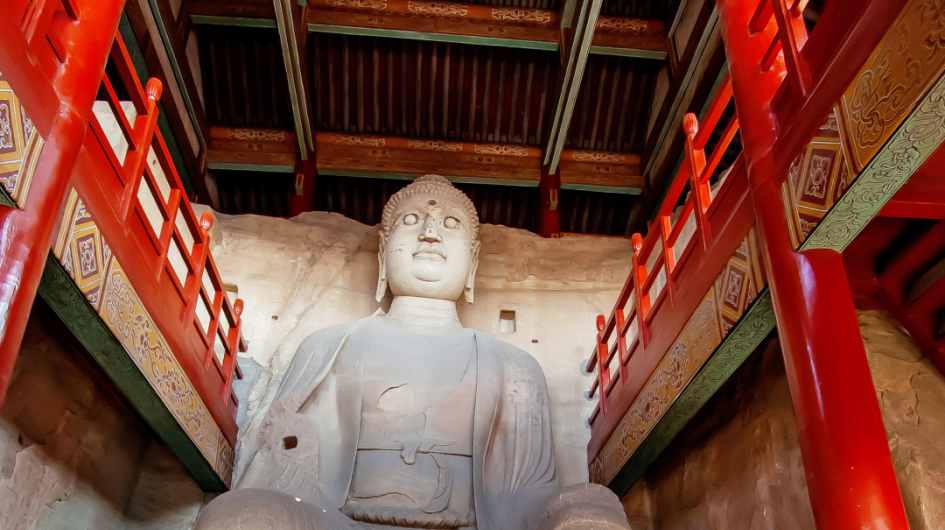 The Buddha of Tianlongshan Grottoes
The Buddha of Tianlongshan Grottoes
Your Journey’s Rewards:
Get close to the Mengshan Giant Buddha and feel its huge size, see how sculpture styles changed from Northern Qi to Tang at Tianlongshan Grottoes, understand the cultural and national meaning of the Buddha head's return, and notice how natural erosion and human repair both affect relics.
Educational Focus:
How do the changing styles of statues in Tianlongshan Grottoes and the "beauty of imperfection" of Mengshan Giant Buddha reflect the laws of localization of Buddhist art and cultural relic protection?
Takeaway:
The statues in Tianlongshan Grottoes were rather thin during the Northern Qi Dynasty, and only turned into the plump and round figures seen in most grottoes today in the Tang Dynasty. This change shows that Buddhist art adapted to Chinese aesthetics and became more secular. The weathering and restoration of the Mengshan Giant Buddha reveal the dialectical relationship between cultural relics' "natural aging" and "human intervention": protection is not about "restoring to the original state" but preserving their historical information.
Thought Challenge:
What inspiration does the return of the Tianlongshan Buddha head through international cooperation offer for the recovery of lost cultural relics worldwide?
After breakfast, visit Qiao Family Compound, the residence of Qiao Zhiyong, a Shanxi merchant in the Qing Dynasty. Laid out as "four halls and one garden", it stretches across six streets with 313 houses neatly arranged like a chessboard. In the ticket office of the courtyard's draft bank, the restored "code system" exhibit (using Chinese characters as codes instead of numbers) and the plaque "Remittance Connects the World" tell the legend of Shanxi merchants – from "venturing west of the pass" to monopolizing the nation's finance.
After lunch, go to the Coal Museum of China. First, in the "Treasures of the Earth" hall, view 300-million-year-old Carboniferous plant fossils to understand how coal forms as "plant fossils turned energy". Then take a small train into the simulated mine. The scenes on both sides of the tunnel, showing Song Dynasty miners digging coal by hand with oil lamp light, contrast sharply with modern mechanized excavators. At the exit, the "Coal and Humanity" exhibit uses data visualization to show how coal drove the Industrial Revolution and reveals Shanxi's economic dilemma of "over-reliance on coal".
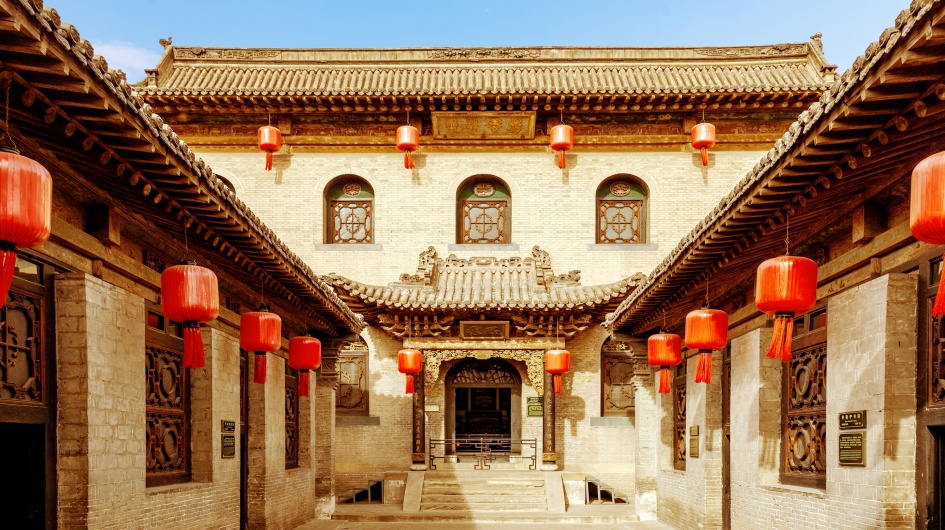 Qiao Family Compound
Qiao Family Compound
Your Journey’s Rewards:
Decode the cultural symbols in Qiao Family Compound's architectural decorations, understand Shanxi merchants' "combination of Confucianism and business" management methods and family governance wisdom, systematically grasp the whole process of coal from formation to mining, and grasp the historical foundation and transformation challenges of Shanxi as an "energy-rich province".
Educational Focus:
What core logic of the relationship between humans and nature in industrial civilization is reflected in the evolution of mining technology from "passively adapting to" to "actively transforming nature" at the Coal Museum? What warnings does this logic hold for today's energy transition?
Takeaway:
The history of improved coal mining technology is essentially a change in how humans see nature—from "conquering and changing it" to "respecting and adapting to it." Early miners just dug coal where they found it to survive, while machine-based mining came with the industrial confidence to "tame nature." But the museum exhibit puts "carbon footprints" next to "mine ecological recovery examples," showing the limits of this thinking: industrial progress never really "conquered" nature, but only "used it." For Shanxi, this is more than a technical matter—it's a symbol of civilizational change. Shifting from "living off coal" to "finding a way forward for coal" is really about redefining how humans relate to energy and nature.
Thought Challenge:
Coal once made Shanxi an "energy engine" but also left it stuck with an industry overly dependent on coal. With "carbon neutrality" a global consensus, how can the coal-era mindset of "conquering nature" turn into the wisdom of "working with nature" for transformation? Between technological progress (like clean coal tech) and energy alternatives (like wind and solar power), which path better reflects the reflection on and transcendence of industrial civilization?
After breakfast, go to Donghu Vinegar Garden to experience Shanxi's unique vinegar culture in person. There, you can visit traditional aged vinegar brewing workshops and learn about the complex brewing process, from raw material selection and handling to fermentation, smoking, and vinegar extraction. You can also join fun activities like making vinegar soap or vinegar-flavored chocolate by hand. Of course, if you're interested, you can try the distinctive vinegar steam treatment.
After lunch, reach Jinci Temple, which is China's earliest existing royal sacrificial garden. Its top attractions are the "Three Wonders of Jinci" and Yuzhao Feiliang (Flying Bridge over Fish Pond). The Three Wonders are the 42 Song-era clay figurines of maidens in the Shengmu Hall, a cypress tree surviving since the Zhou Dynasty over three thousand years ago, and the ever-flowing Nanlao Spring—all symbols of Jinci Temple's historical and cultural development. Yuzhao Feiliang is a unique pool structure, with the bridge above looking like it leaps over the water, very impressive. Here, you can try "dougong assembly": use pre-made wooden parts to put together a Song Dynasty five-step bucket set, understand how the Shengmu Hall's "column reduction method" (removing 14 columns) uses bucket arches to spread weight, achieving the earthquake-resistant miracle of "no nails used."
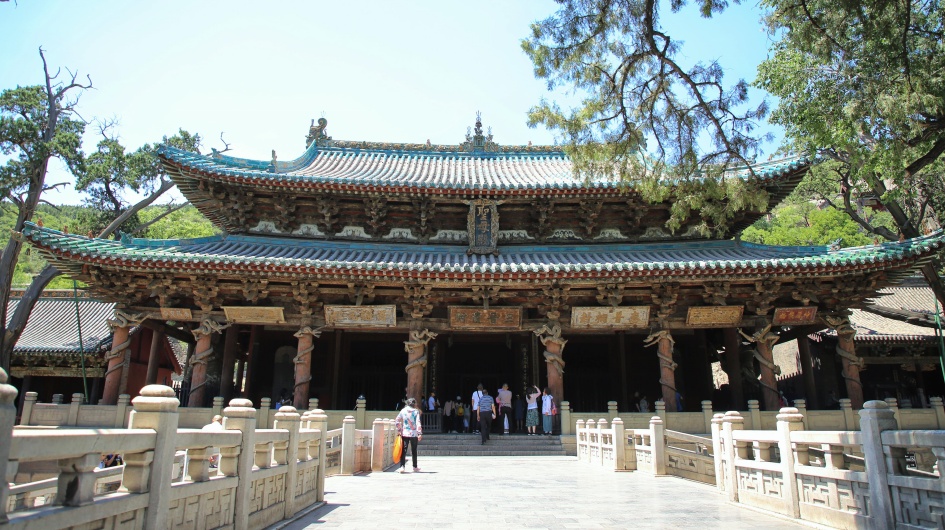 The Shengmu Hall of Jinci Temple
The Shengmu Hall of Jinci Temple
Your Journey’s Rewards:
Experience the intangible cultural heritage craft of aged vinegar up close, and learn the microbiology and seasonal wisdom behind this "taste heritage." Analyze the mechanics and beauty of Jinci's ancient buildings, and master the core skills of traditional architecture by practicing dougong assembly.
Educational Focus:
As living traditional crafts, Donghu Vinegar's "ancient brewing methods" and Jinci's bucket arches with "mortise and tenon joints" both reflect ancient Chinese people's pursuit of "dynamic balance". How is this balance achieved amid the tension between "natural constraints" and "human creation"? And what craftsmanship, ethics and cultural genes do they carry?
Takeaway:
Their core similarity is practicing "symbiotic wisdom": vinegar brewing uses seasonal heat and cold to adjust microbial activity, achieving stable flavor by "following the seasons"; bucket arches use mortise and tenon joints to absorb external impacts, keeping structures balanced by "adapting to conditions". They neither passively yield to nature nor blindly change it. Instead, through experience that "knows not just how, but why", they find the right balance between rules and creation, showing vividly the "sustainability" of traditional crafts.
Thought Challenge:
Can the mechanical principles of Jinci's bucket arches inspire modern green buildings, like low-carbon materials and earthquake-resistant designs?
After breakfast, visit the Shanxi Museum, a treasure house of Shanxi's cultural relics. It has a rich collection from ancient times all the way to the Ming and Qing dynasties. By closely observing and learning about valuable artifacts like the Bird Vessel, you can explore the politics, economy and culture of the ancient Jin State here. Next, visit Twin Pagoda Temple, whose twin pagodas are one of Taiyuan's famous buildings. A visit to the temple lets you learn the style and features of Ming Dynasty Buddhist architecture, and discover the twin pagodas' construction techniques and historical and cultural value.
After lunch, go to Taiyuan's Northern Qi Mural Museum, which is known for murals from the Northern Qi period. Covering rich themes like travel and banquet scenes, these murals show clearly what social life was like back then. They let you see directly the Northern Qi's social customs, cultural practices and painting skills. You can also try copying murals here: use mineral pigments such as cinnabar and stone green to copy warrior lines on silk, or making a clay plate painting to turn "Hu-Han music and dance" scenes from the murals into 3D works. This lets you feel firsthand the art mix of "Hu styles and Han charm" in the Northern Dynasties.
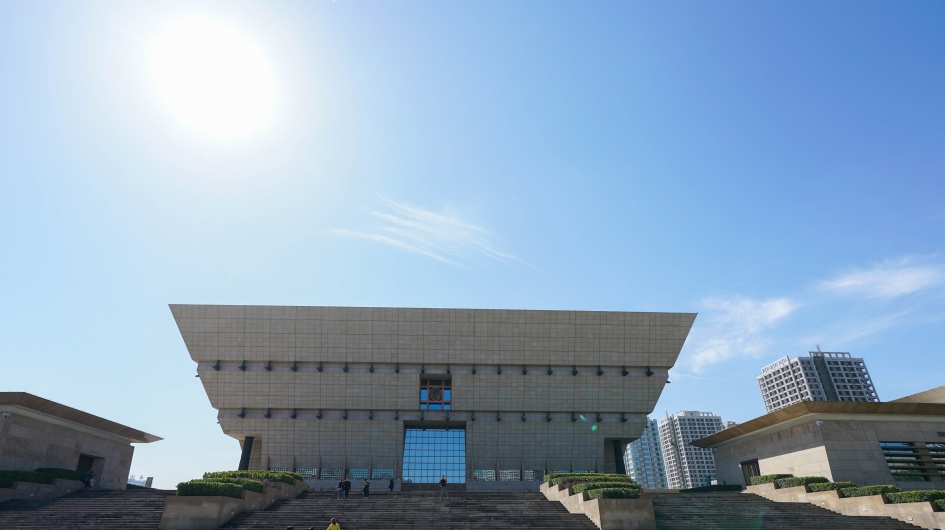 Shanxi Museum
Shanxi Museum
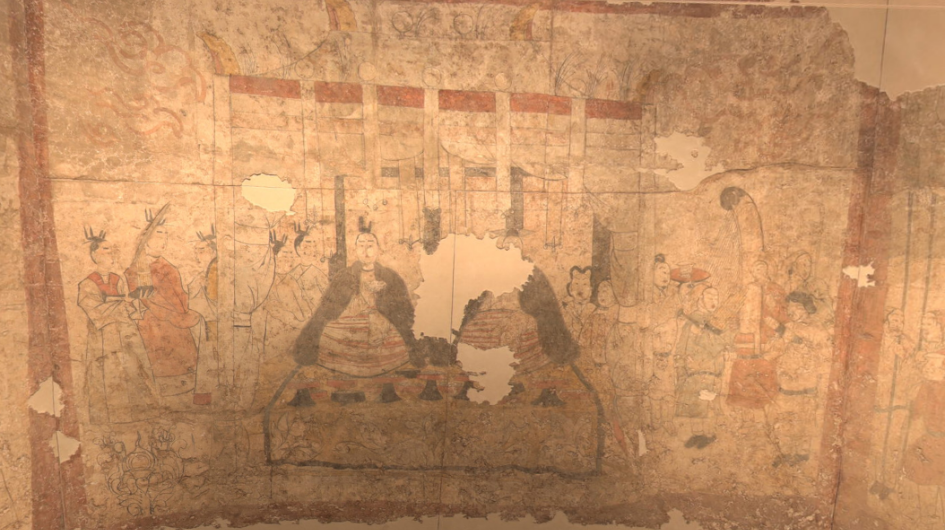 The mural of the Northern Qi Mural Museum
The mural of the Northern Qi Mural Museum
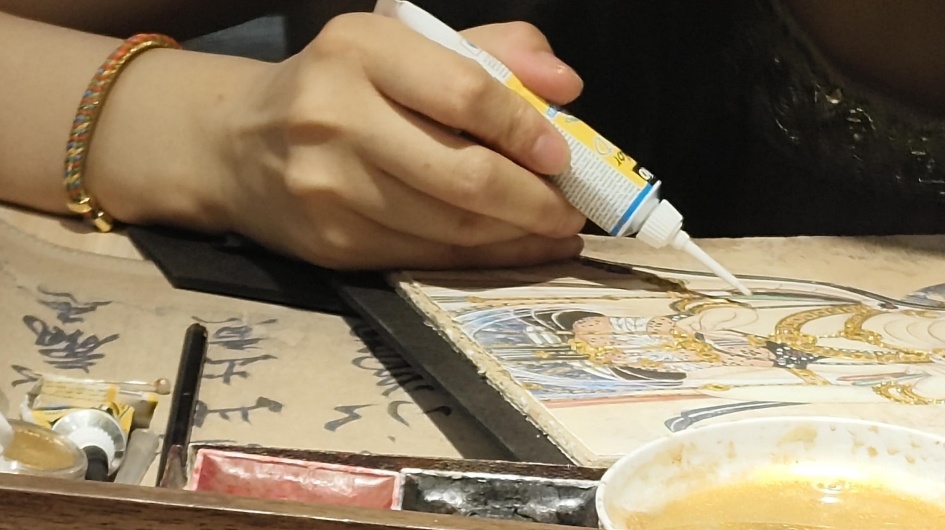 Clay plate painting
Clay plate painting
Your Journey’s Rewards:
Build Shanxi's cultural context from the Western Zhou to the Northern Qi dynasties. Understand the historical narrative function of cultural relics like bronze ware and alliance books. Deepen your understanding of ancient art and religious culture through the twin pagodas' architecture and mural creation.
Educational Focus:
Why can the cultural relics in Shanxi Museum, the twin pagodas of Yongzuo Temple, and the Northern Qi murals serve as vivid evidence of "ethnic integration"?
Takeaway:
The Bird Vessel cleverly blends the images of a bird and an elephant. The bird comes from the phoenix totem worship of northern tribes, while elephant culture was more common among southern tribes—these are vivid symbols of early cultural exchanges and collisions between northern and southern tribes in China. The Twin Pagoda Temple harmoniously contains both Buddhist and Taoist elements, quietly telling the historical path of religious integration. In Northern Qi murals, Hu and Han costumes shine alongside each other, directly recording the grand scene of multicultural integration along the Silk Road. Together, these three confirm a fact: the long river of Chinese civilization surges forward through the collision and mutual learning of diverse cultures, and constantly gains vitality in coexistence and common prosperity.
Thought Challenge:
The digital replicas of Northern Qi murals have been exhibited worldwide. Does such "digital dissemination" weaken the "sanctity" of the original works?
Pack your luggage and head home with a full load of gains!
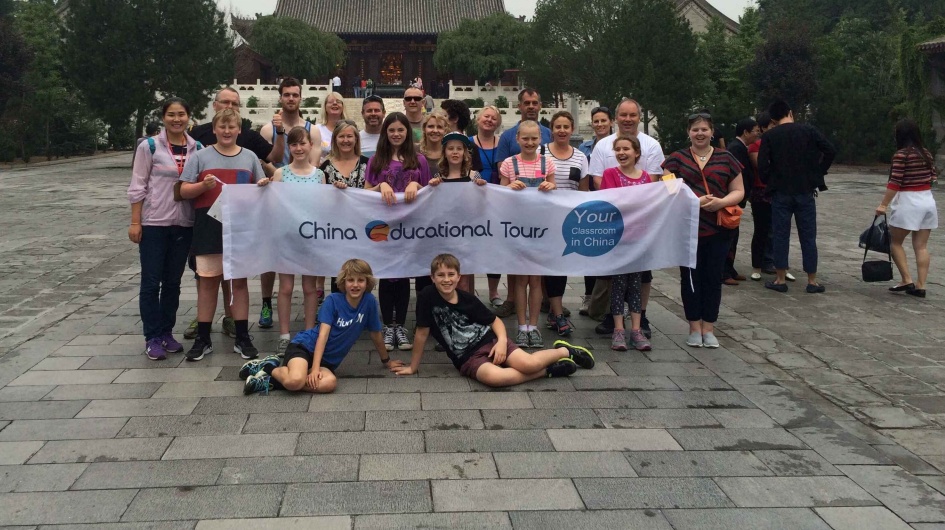 Students Group
Students Group
This tour is suitable for: School, Family, History Lovers
What’s Included
- Experienced tour guides
- Entrance fee to all spots listed in the itinerary
- Well selected hotel accommodation
- Provides delicious breakfast and lunch
- Expert drivers and comfortable vehicles with air-conditioning
Hotel Options
- Comfortable Accommodation: Coconut Crystal Hotel
- Deluxe Accommodation : Jinci Hotel
Wechat & WhatsApp: +86-13471279378